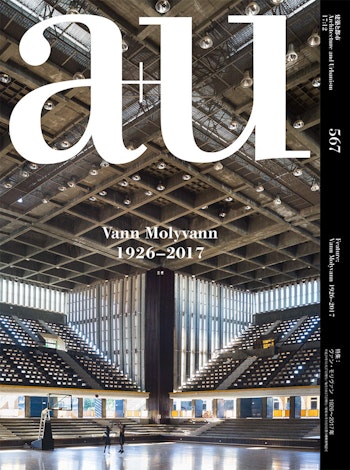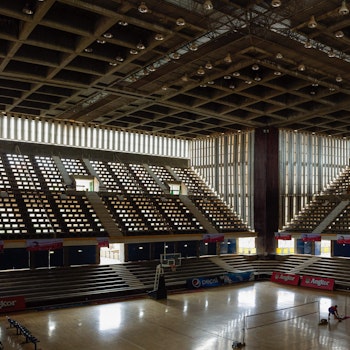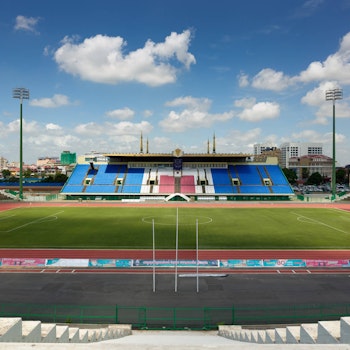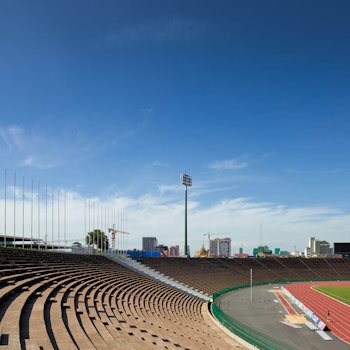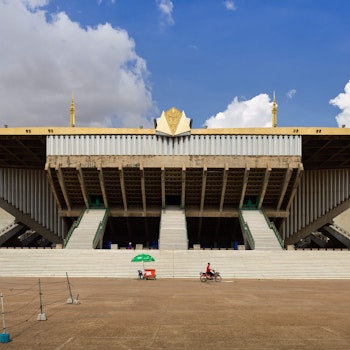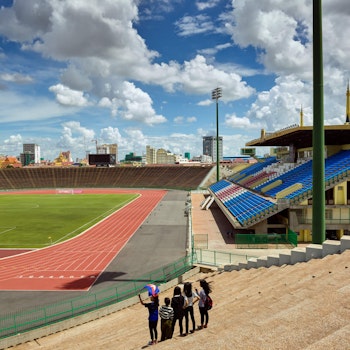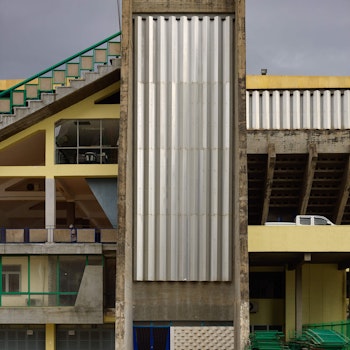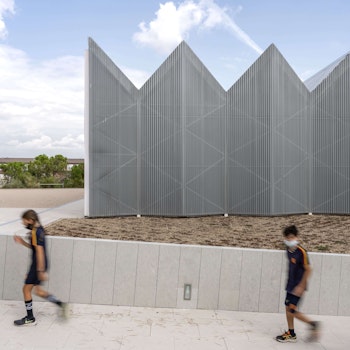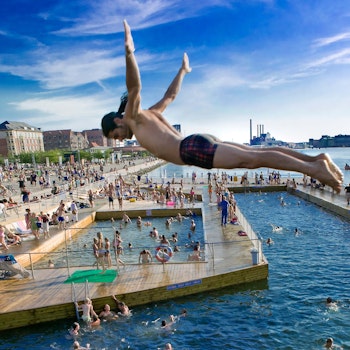ARCHITECT
VANN MOLYVANN
PUBLICATIONS a+u
Construction on the National Sports Complex started in 1963 and was completed in 1964.[2] Designer Vann Molyvann made use of massive earthworks to create the stadium, digging up 500,000 cubic meters of earth to shape the grounds.
The stadium might have been built to host the 1963 Southeast Asian Peninsular Games, but the games were cancelled due to political problems in Cambodia. There was also the short-lived GANEFO games, that were held in Phnom Penh, Cambodia in November 25~December 6, 1966 and were named 'First Asian GANEFO'. The stadium did play host to appearances by visiting dignitaries and state occasions, and was the home of Cambodia's national athletics teams.
The stadium played a small but integral part in the 1966 FIFA World Cup, when North Korea faced Australia in a qualifier as the two remaining Asia/Oceania zone teams: as North Korea lacked diplomatic relations with most countries and did not have a FIFA-standard venue at the time, while the Australian immigration laws in force meant the North Korean team would be unlikely to receive visas to enter the country, finding a suitable venue for the match proved difficult until Head of State Norodom Sihanouk, an ally of Kim Il-sung, informed FIFA the matches could be held in Phnom Penh.
The matches attracted 60,000 and 40,000 fans, with Sihounouk decreeing half would cheer for Australia, while the other half cheered the North Koreans. The matches were held on 21 November 1965 and on 24 November 1965, with North Korea winning both (6–1 and 3–1). Because all African teams had withdrawn to protest FIFA declining to allocate them a place in the final tournament, North Korea automatically qualified for the final tournament, where they reached the quarter-finals.
Among the facilities are Olympic-size pools for swimming and diving and an indoor volleyball court with a capacity of up to 8,000, now known as the Olympic Stadium Indoor Arena. The diving boards and swimming pools were restored in 2017 after years of disuse, and are now enjoyed daily by the general public.
source: Wikipedia
YOU MAY ALSO LIKE

